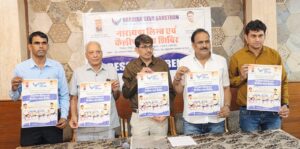
Delhi Pollution: On Friday, the Supreme Court addressed the ongoing pollution crisis in Delhi, expressing dissatisfaction with the Commission for Air Quality Management (CAQM) for its ineffective measures against stubble burning.
The court said emergency-like conditions had been caused by pollution and questioned the CAQM on the lack of significant reductions in stubble burning.
The justices inquired about the absence of regular meetings and criticized the commission for its inaction, stating, “Your action is only on paper, and you are a mute spectator.” The court emphasized that without a clear message of strict enforcement against violations, the regulations would remain ineffective.
In a previous hearing on August 27, the court noted that the Delhi-NCR Pollution Control Board was underperforming due to staffing shortages. The court had asked five states to fill these vacancies by April 30, 2025, to enhance pollution control efforts.
This case is being heard by a bench comprising Justice Abhay S Oka and Justice AG Masih.
CAQM Chairman Rajesh Verma said that after forming the committee, he has issued 82 legal orders and 15 suggestions. His team has inspected 19,000 places and ordered the closure of more than 10,000 factories.
On this, the court said that CAQM has been in existence for three years, but it has issued only 82 instructions. This much action is not enough. The commission needs to be more active. The commission should ensure whether the problem of pollution is being reduced by its instructions or not.
The Central Government was constituted CAQM in 2021. It has been created to deal with the problem of increasing pollution in Delhi-NCR and surrounding areas.
Additional Solicitor General (ASG) Aishwarya Bhati read out the affidavit on behalf of the Center in the Supreme Court. In this, information was given about the steps taken to deal with the stubble crisis like issuing advice and guidelines. But the court seemed unhappy with these efforts. Justice Oka said, ‘Everything is in the air. We have not been told anything about what has been done in the NCR states.’






